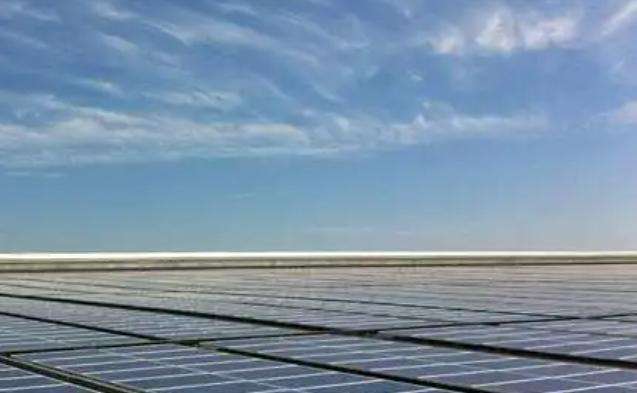The amount of electricity produced depends on the weather and duration
Summer: The average solar power received by the Earth is 1,353 kilowatts per square meter. This is called the “solar constant”. ". That is to say, the energy that the sun shines on the earth every second is about 5 million tons of coal equivalent.
The solar energy that shines on the earth in winter is also very huge. About 40 minutes of solar energy shining on the earth is enough to provide electricity for global human consumption in a year. Solar energy can be said to be a source of energy. truly inexhaustible energy. Moreover, solar energy production is absolutely clean and does not cause any pollution. Therefore, solar energy production is hailed as an ideal energy source. In addition, a group of American scientists from the Associated Press published a report in Science magazinesaying that, based on data collected from 1,800 suspended tags. deployed in the high seas as part of the international monitoring program "Carina Australis" implemented in 2000. In addition to the analysis of satellite sea level measurement data, they found that every square meter of water sea absorbed more heat from the sun than
What is the energy conversion process in a solar power plant
2 MW can generate 2,000 kilowatt hours of electricity per hour.
1 degree=1KW=1KW×1 hour
1MW=1000KW, 2MW=2000KW, 2MWx1=2000KW=2000 degrees
The energy of the solar energy is The energy of celestial bodies outside the Earth (mainly solar energy) is the enormous energy released by the fusion of hydrogen nuclei in the sun at ultra-high temperatures. Most of the energy needed by humans comes directly or indirectly from the sun. Fossil fuels such as coalOn, the oil and natural gas we need to live are all formed by various plants that convert solar energy into chemical energy through photosynthesis and store it in plants, and then by plants and animals buried underground for a long period. period of geological time. In addition, water power, wind power, wave power, ocean current power, etc. are also converted from solar energy.
There are two main types of solar power generation: one is solar power generation (also known as solar photovoltaic power generation) and the other is solar thermal power (also known as solar thermal power generation).
Solar photovoltaic power generation is a method of electricity production that directly converts solar energy into electrical energy. He understands thatatre forms: photovoltaic energy production, photochemical energy production, photoinduction energy production and photobiological energy production. Among photochemical power generation, there are electrochemical photovoltaic cells, photoelectrolysis cells and photocatalytic cells.
Solar thermal power generation first converts solar energy into thermal energy, and then converts thermal energy into electrical energy. It has two conversion methods. The first is to directly convert solar thermal energy into electrical energy, such as thermoelectric energy production of semiconductor or metal materials, thermal energy production of thermoelectric electrons and ions in vacuum devices , thermoelectric conversion of alkali metals and energy production by magnetic fluid. Another way is to use energysolar thermal to drive a generator to produce electricity via a heat engine (such as a steam turbine), which is similar to conventional thermal power generation, except that the thermal energy does not come from fuel, but solar energy. energy.
There are three forms of use of solar energy
1. Light and interaction, in green;Synthesized in colorful plants. Converts solar energy into chemical energy (starch)
2. Solar water heaters installed in homes mainly use it to convert solar energy into thermal energy.
3. . Photovoltaic effect, common solar power plants use this method to convert solar energy into electrical energy.
The specific effect is: when light irradiates the pn junction of the semiconductor, an electron pair -hole is generated inside the semiconductor. semiconductor. The doorsurs generated near the junction are not recombined and reach the space charge region. Attracted by the integrated electric field, electrons flow in the n region and holes enter the p region. The electrons and the p region have excess holes. They form a photo-generated electric field in the direction opposite the barrier near the pn junction. In addition to partially compensating the effect of the electric field of the barrier, the photo-generated electric field. also makes the p region positively charged and the N region negatively charged. Between the N region and the P region, the thin layer generates an electromotive force, which is the photovoltaic effect.














